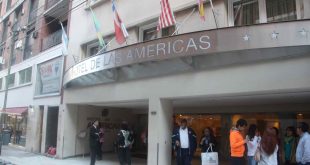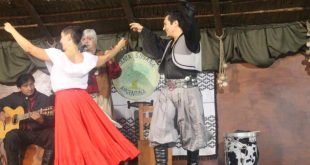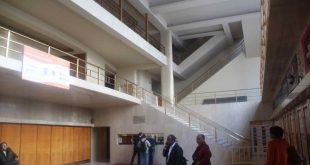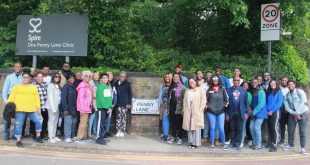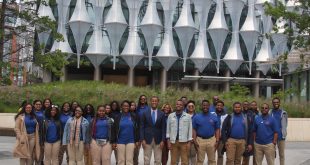Buenos Aires is the most European-like city in South America. Despite Argentina being a Spanish colony, most of the architecture in Buenos Aires is taken from the French. Many of the early Argentinian aristocracy had homes in both Argentina and France. They brought much of the culture from France back here.
Argentina is derived from the Latin “argentum,” meaning silver. The original settlers believed like Peru, there would be much silver in the mountains of this country, which was not the case at all. Buenos Aires, of course, means good air, which was quite a good omen, as the city does not have the air pollution like other large cities.
 In driving around Buenos Aires, one will notice a massive system of roads. The main avenue that dissects the city, called de Avenue 9 de Julio, the date that Argentina proclaimed its independence, has as many as sixteen lanes! In addition to eight lanes in each direction, there are four more lanes for mass transit vehicles to make a complete thruway as wide as 20 lanes. Even the highway entering Buenos Aires at one point had as many as nine lanes going each way! Again, I challenge anyone to find a highway system like this one in the United States, which suggests the large number of cars on the road in this city. How we could use a couple of extra lanes on the Baltimore beltway! It has been said that much can be learned about a civilization by observing their roads.
In driving around Buenos Aires, one will notice a massive system of roads. The main avenue that dissects the city, called de Avenue 9 de Julio, the date that Argentina proclaimed its independence, has as many as sixteen lanes! In addition to eight lanes in each direction, there are four more lanes for mass transit vehicles to make a complete thruway as wide as 20 lanes. Even the highway entering Buenos Aires at one point had as many as nine lanes going each way! Again, I challenge anyone to find a highway system like this one in the United States, which suggests the large number of cars on the road in this city. How we could use a couple of extra lanes on the Baltimore beltway! It has been said that much can be learned about a civilization by observing their roads.
 On day 10, we travelled to San Isidro, one of the most affluent regions in Argentina. The area is an historic area with cobbled streets and old single-story houses. While there, we visited the famous neo-gothic San Isidro Cathedral. The region is adjacent to the Rio de la Plata, which borders the east boundary of Buenos Aires. The Rio de la Plata is the widest river in the world, with Uruguay on the opposite side. Many large houses are found in this San Isidro region.
On day 10, we travelled to San Isidro, one of the most affluent regions in Argentina. The area is an historic area with cobbled streets and old single-story houses. While there, we visited the famous neo-gothic San Isidro Cathedral. The region is adjacent to the Rio de la Plata, which borders the east boundary of Buenos Aires. The Rio de la Plata is the widest river in the world, with Uruguay on the opposite side. Many large houses are found in this San Isidro region.
We then went to Tigre, a section of the Buenos Aires that lies on the Paraná delta. Tigre is an island surrounded by several small steams and rivers. To get a sense of this region, we took a cruise (boat ride) around the Paraná delta for approximately one hour.
After a return to the hotel, many of us toured the Buenos Aries Opera House, Teatro Colón. Twelve of us paid for a personal guided tour of the most expensive building in all of Argentina. Every material in the opera house was imported from Europe. Some consider this the house made of gold. This Argentinian opera house is considered to have some of the best acoustics of any opera house in the world. As most were music majors, this was an educational lecture about architecture, acoustics, and overall history for all who attended.
During the evening, we enjoyed a farewell dinner at one of the few buffets in all of Argentina. Finally, everyone could choose what to eat based on personal preference. In twenty-four hours, we would be on a plane back to the United States.
 Morgan State University Newsroom Morgan State University
Morgan State University Newsroom Morgan State University

